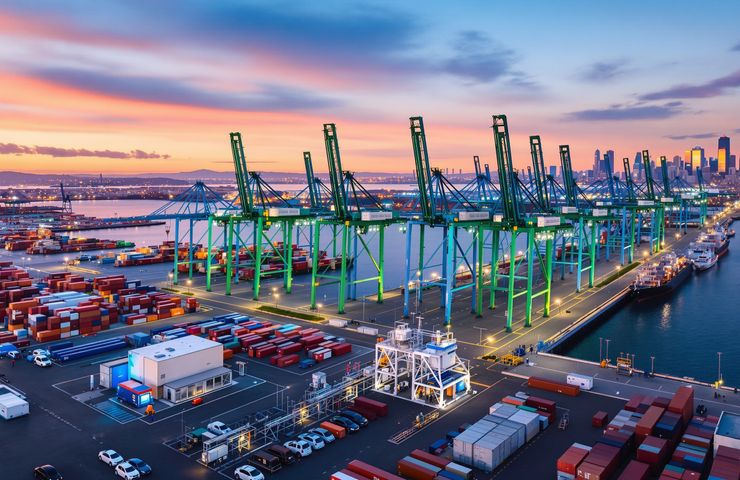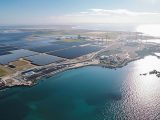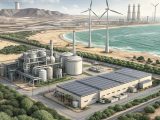
Zero-Emission Technology for Cargo Handling: LA, Long Beach Ports Seek Public Comment
October 14, 2025On October 10, 2025, the Ports of Los Angeles and Long Beach kicked off a formal public comment period to nail down the tech pathways steering their ambitious zero-emission technology goals. As the entry point for nearly 40% of U.S. container imports, and with more than 3,000 diesel machines humming day and night in the San Pedro Bay Port Complex, the pressure to slash greenhouse gas and particulate emissions is intense. Under the Clean Air Action Plan (CAAP), they’re aiming for 100% zero-emissions cargo operations by the end of the decade. We’re watching closely—this could set the worldwide template for port electrification and industrial decarbonization, not to mention finally giving locals some much-needed clean air.
Historical Context
We all know the story: postwar container shipping put the Ports of Los Angeles and Long Beach on the map, roaring ahead as Southern California’s economic powerhouses. But with every container stacked, communities nearby got a front-row seat to poor air quality. Back in 2006, the CAAP kicked off, and over the years it’s dialed up emission targets to today’s ambitious 2030 deadline. It’s a high-stakes game: in 2024, the twin ports shifted 9.3 million TEUs and supported over 1.4 million jobs, yet they’re still leading the region in NOx, PM2.5 and CO2 emissions.
Core Initiative
Now, the authorities are turning to you—yes, you—for feedback on two clean contenders: battery-electric equipment and hydrogen fuel cells. On one hand, battery-powered yard tractors, forklifts and gantry cranes mean zero on-dock emissions, lower operating costs and sweet synergy with port electrification. On the flip side, they demand a beefed-up grid and mountains of charging infrastructure. As for hydrogen fuel cells? They promise lightning-fast refuels and grunt for heavy-duty work, but without a solid supply chain and refueling stations, they’re stuck in the starting gate. Stakeholders are hashing out trade-offs around performance, cost and who-foots-the-bill for infrastructure. And let’s not forget this isn’t just about the terminals—it impacts over 12.7 million folks across the LA–Long Beach metro, many living right near the port zone.
Strategic Implications
Think of this as both a business play and a policy game. The stakes? Nothing less than leading the charge on global industrial decarbonization for ports. Consider:
- Global Benchmark: Handling nearly 40% of U.S. container imports, these twin ports’ success could become the blueprint for top ports in Asia and Europe on zero-emission technology.
- Capital Flow: Investors and terminal operators are eyeing multi-billion-dollar bets on electric charging networks, green hydrogen facilities and smart-grid upgrades.
- Competitive Edge: Early movers like Yusen Terminals are already flexing with the U.S.’s first hydrogen fuel cell RTG crane and a fleet of electric top handlers.
- Policy Synergy: Federal infrastructure dollars and California climate incentives are ripe for public–private partnerships around hydrogen production and renewable electricity.
- Green Shipping Corridors: Aligning clean cargo handling with emerging low-emission trade routes to Asia and the Americas.
Technical Snapshot
- Battery-Electric Equipment: Modular lithium-ion battery packs, onboard telematics and regenerative braking—charge cycles span 4–8 hours depending on duty profiles, supercharging your port electrification strategy.
- Hydrogen Fuel Cell Machinery: PEM fuel cells pumping out up to 300 kW of continuous power, refueling in under 20 minutes. Lifecycle tests are underway to match decades of diesel reliability.
- Rail Electrification & Digital Logistics: Complementary investments in electric railyards and AI-driven cargo flow optimization are key to the broader industrial decarbonization push.
Why It Matters
For folks living nearby, this isn’t academic nitpicking. EPA data links port pollution to asthma flare-ups and heart troubles—hit hardest in Wilmington, San Pedro and West Long Beach. By 2030, CAAP aims to slash diesel particulate matter by 70%, which could mean thousands fewer asthma attacks and hundreds fewer cardiac-related hospital trips every year.
On the climate side, swapping out diesel for clean power could cut up to 1.6 million metric tons of CO2 a year—that’s like taking 350,000 cars off the road.
Global Context
The LA–Long Beach push isn’t a solo act. From Rotterdam to Shanghai, ports are experimenting with everything from battery-electric equipment to hydrogen fuel cells. What makes San Pedro Bay stand out is sheer scale: 9.3 million TEUs moved in 2024, making it the first mega-port to throw open the doors on public vetting for decarbonization. The lessons we learn here will inform industrial decarbonization roadmaps for ports worldwide and beyond, touching everything from logistics hubs to supply chain strategies.
Challenges & Investments
Let’s be real: big changes come with big price tags. We’re talking multi-billion-dollar bills for swapping out diesel machines, setting up charging stations, green hydrogen plants, storage tanks and pipeline hookups. The Los Angeles Department of Water and Power (LADWP) has penciled in $500 million for grid upgrades—but if that lands late, full electrification could slip by 6–12 years. On top of that, operators are eyeing second-life batteries and hardware standardization to trim costs. And then there’s the workforce—upskilling crews and handling downtime during swap-outs is another puzzle piece.
Public Input Process
Here’s how you can chime in: the comment window stays open until December 2025. The ports want your thoughts on:
- Performance standards for electric and fuel cell equipment
- Site logistics for charging stations and hydrogen refueling
- Cost-sharing models and incentive structures
You can submit feedback through the ports’ online portal, drop by public workshops, or even mail in a letter. All your input gets rolled into a summary report due Q1 2026, which will guide the final tech roadmap.
Next Steps
Once comments wrap up, the ports will lock in their technology mix and fire up procurement by mid-2026. Here’s the game plan:
- Expand fast-charging bays by late 2026
- Bring several hydrogen refueling stations online by 2027
- Roll out hundreds of electric cranes and fuel cell vehicles starting in 2028
- Upgrade renewable power supplies to keep pace with demand
Final Thought
At the end of the day, we’re all in this together—terminal operators, clean tech innovators, neighborhood advocates. Your voice in this public comment phase can tip the scales, steering the ports toward a future of sustainability, health equity and real gains in industrial decarbonization.



 With over 15 years of reporting hydrogen news, we are your premier source for the latest updates and insights in hydrogen and renewable energy.
With over 15 years of reporting hydrogen news, we are your premier source for the latest updates and insights in hydrogen and renewable energy.